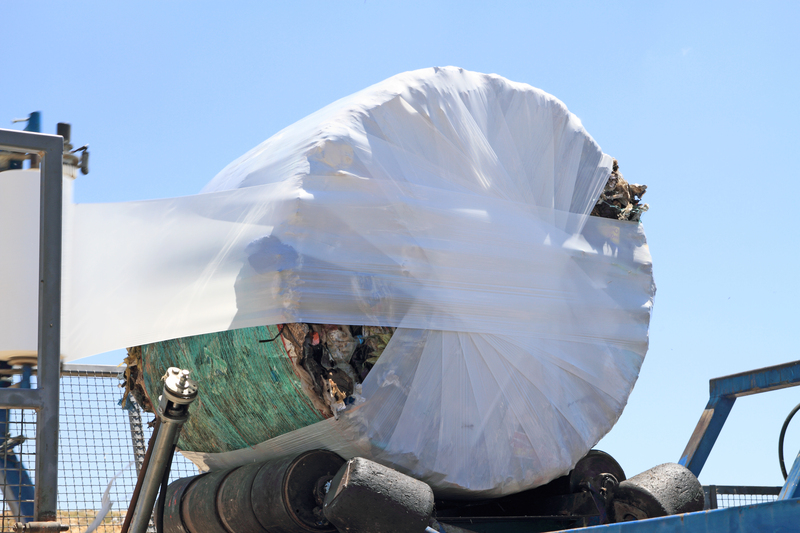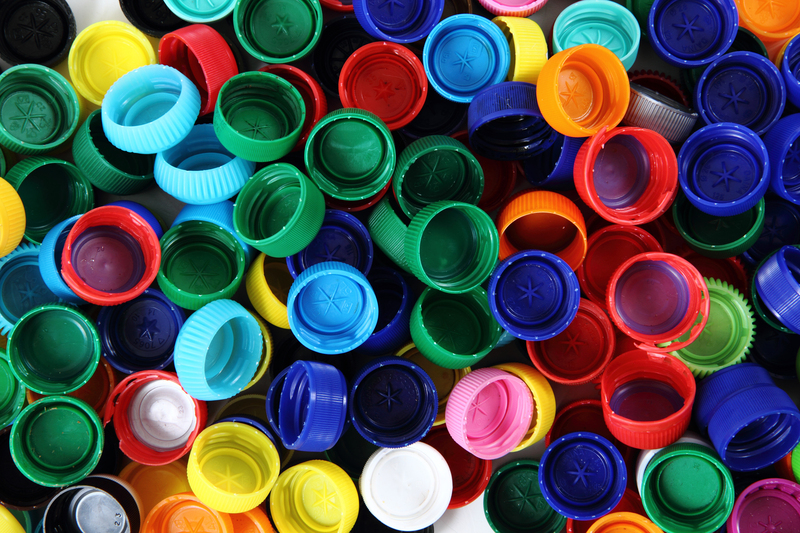Community Tips for Responsible PPE Waste Management
In recent years, the surge in use of Personal Protective Equipment (PPE) such as masks, gloves, face shields, and gowns, propelled by the Covid-19 pandemic, has raised urgent concerns regarding PPE waste management. The world was introduced to millions of single-use PPE items daily, resulting in a parallel rise in pollution, landfill overflows, and threats to our environment and wildlife. However, communities have an essential role to play in ensuring responsible PPE waste disposal. In this comprehensive guide, we will discuss effective community tips for responsible PPE waste management and provide expert advice on reducing, collecting, and correctly disposing of PPE waste.

Understanding the Importance of PPE Waste Management
PPE has undoubtedly saved countless lives by preventing the spread of infections and diseases. However, when these items are improperly discarded, they become environmental hazards. PPE waste, especially masks and gloves, often ends up in public spaces, sidewalks, waterways, and even oceans, posing risks to humans, animals, and ecosystems. As such, proper PPE waste disposal practices are crucial for:
- Preventing environmental pollution and plastic contamination
- Safeguarding animals from accidental ingestion or entanglement
- Reducing the risk of disease transmission from contaminated PPE
- Promoting community health and cleanliness
The Challenges of PPE Waste Disposal
There are significant challenges in managing PPE waste. Most PPE items are made from non-biodegradable plastics like polypropylene, which can take hundreds of years to decompose. Additionally, the potential contamination of used PPE with COVID-19 or other pathogens makes disposal more complex and risky.
Essential Community Tips for Responsible PPE Waste Management
Communities can adopt several best practices to address the increasing tide of PPE waste efficiently and responsibly. Below are practical and effective tips every individual and community group should consider.
1. Educate Community Members
The first step toward better PPE waste management is awareness. Local governments, schools, and community organizations must educate the public on the importance of correct disposal methods for PPE. Initiatives might include:
- Workshops and seminars about responsible PPE waste disposal
- Distribution of easy-to-understand infographics and flyers
- Use of social media platforms to spread awareness campaigns
- Posters and signage in public areas highlighting proper PPE disposal procedures
Tip: Awareness leads to action. Encourage members to talk to their families, friends, and colleagues about the environmental impact of improper PPE waste management.
2. Provide Dedicated PPE Waste Bins
Well-placed and clearly marked PPE disposal bins play a pivotal role in proper waste management. These bins should be:
- Located at entrances of public areas like supermarkets, hospitals, offices, and schools
- Clearly labeled "PPE Waste Only" to prevent contamination and confusion
- Made of durable, easy-to-clean materials and fitted with lids or foot-operated covers to prevent direct contact
Communities can work with local authorities to install these bins and organize scheduled collection for incineration or safe landfill disposal.
3. Promote Reusable PPE
Wherever possible, community members should be encouraged to opt for reusable PPE items like washable cloth masks and reusable face shields. This simple switch can drastically reduce single-use PPE waste generation. Remember to:
- Choose products with high durability that meet safety standards
- Educate users about proper sanitization and storage of reusable PPE
- Limit the use of disposable PPE to high-risk settings or healthcare environments
Bonus Tip: Organize local sewing and craft groups to make reusable masks available for free or at low cost to community members.
4. Organize Community Clean-Up Drives
Mobilize volunteers for regular clean-up drives focused on collecting discarded PPE from streets, parks, and beaches. Not only do these events help keep the environment tidy, but they also raise community awareness and foster responsibility toward public spaces.
- Distribute gloves, tongs, and collection bags to volunteers
- Ensure that all collected PPE waste is handled and disposed of safely
- Document and share the outcomes of the clean-up by posting before-and-after photos online
5. Safe Handling and Disposal at Home
Most PPE waste, such as masks and gloves, originates from households. For safe disposal at home:
- Place used PPE in a separate, lined plastic bag
- Tie the bag securely before disposing in the general waste bin
- Do not attempt to recycle used PPE, as it may contaminate the recycling stream
- Wash hands thoroughly after handling used PPE
Remember: Never flush PPE items down the toilet - this can lead to environmental contamination and harm to sewage systems.
Reducing PPE Waste: Community Strategies for Minimizing Impact
Proactive reduction of PPE waste can significantly ease burdens on waste management systems. Here are strategies to help communities limit PPE waste creation:
Encourage Bulk Purchasing and Distribution
Coordinated bulk procurement by community organizations can reduce packaging waste and ensure a more efficient distribution of PPE, minimizing excess and single-use packaging associated with individual purchases.
Emphasize Proper Usage of PPE
Overuse and misuse of disposable PPE contribute significantly to waste. By educating the community about when PPE is genuinely necessary and encouraging adherence to guidelines for extended usage (where applicable), waste can be limited without sacrificing safety.
- Follow official health guidelines to avoid unnecessary use of disposable PPE
- Emphasize use of cloth masks in low-risk environments
- Discourage panic-buying and hoarding of single-use PPE items
Partner with Local Recycling and Waste Management Companies
Some specialized waste management companies now offer PPE recycling programs for items like masks and gloves composed of recyclable plastics. Community groups can reach out to these organizations to explore:
- Collection programs for large-scale PPE waste from institutions or businesses
- Opportunities to set up drop-off points for PPE that can be recycled
- Fundraising to support more advanced waste treatment technologies
Responsible PPE Waste Management During Public Events
Community events and public gatherings can be hotspots for PPE waste accumulation. Event organizers and participants should commit to responsible PPE waste practices:
- Install temporary PPE waste bins at entrances and exits
- Appoint volunteers or staff to monitor PPE bin use and educate attendees
- Clearly communicate waste management procedures before and during the event
- Arrange prompt collection and proper disposal of event waste
Tip for Organizers: Encourage attendees to bring their own reusable masks and PPE, reducing on-site distribution of disposables.
The Role of Authorities and Businesses in PPE Waste Management
While community involvement is essential, partnerships with local authorities and businesses are equally important for comprehensive PPE waste management strategies:
- Government agencies should provide clear guidance on PPE disposal, offer waste collection support, and enforce littering laws.
- Healthcare facilities must adhere to strict protocols for infectious PPE waste and train staff in safe handling and disposal.
- Businesses can contribute by providing PPE bins for employees and customers, promoting reusable alternatives, and running internal awareness campaigns.
Incentivizing Community Participation
Incentives like public recognition, small rewards, or community contests can boost participation in responsible PPE waste management initiatives. Local leaders can collaborate with businesses to offer discounts or vouchers to those supporting clean-up drives or proper disposal.
Innovative Solutions for Sustainable PPE Waste Management
Recent advancements in waste management offer novel approaches to address PPE waste more sustainably:
- Biodegradable PPE: Innovation in material science has led to the development of biodegradable masks and gloves. Communities should advocate for using and supporting these alternatives when available.
- PPE Upcycling: Creative projects can repurpose single-use PPE into new products, such as construction materials or roadways, helping divert waste from landfills.
- Waste-to-Energy: Some facilities convert PPE waste into energy through incineration under controlled conditions, reducing environmental harm.
Communities can lobby for investment in these solutions or organize local "PPE upcycling" workshops, turning waste into art or practical items.
Protecting Wildlife and the Environment from PPE Pollution
Discarded PPE poses severe threats to wildlife. Animals can become entangled in ear loops or ingest small plastic fragments, leading to injury or death. Here's how communities can help protect the environment:
- Snip the ear loops off masks before disposal to reduce risks of animal entanglement
- Encourage proper bin usage and removal of visible PPE waste from natural habitats
- Report heavily littered areas to local authorities for clean-up
- Support conservation groups working to protect wildlife from pollution

FAQs on Community PPE Waste Management
Q1: Can PPE be recycled in household recycling?
No. Most household recyclers do not accept used PPE due to contamination risks. Dispose of it in general waste following your community guidelines.
Q2: Where should I throw away my used mask or gloves?
Place used PPE in a dedicated PPE waste bin or a separately lined and sealed plastic bag before discarding it in the general waste bin.
Q3: Are cloth masks better for the environment?
Yes, reusable cloth masks greatly reduce waste compared to single-use masks. However, ensure they're properly sanitized after every use.
Q4: What about PPE litter in parks or water bodies?
Participate in or organize community clean-up activities. Always use gloves and tongs when picking up used PPE and dispose of it safely afterwards.
Conclusion: Building a Responsible Community for PPE Waste Management
Managing PPE waste responsibly is a shared community responsibility that benefits public health and environmental stability. By adopting the tips presented above, ranging from public education to resourceful clean-up initiatives and innovative waste solutions, communities can make significant strides toward responsible PPE waste management.
Through collective action, practical policies, and continued vigilance, we can overcome the challenges posed by increased PPE use and set a sustainable example for generations to come. Implement these community tips for responsible PPE waste management today--and be a part of the solution!